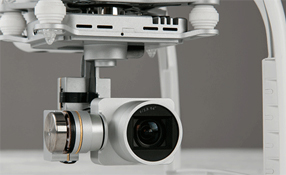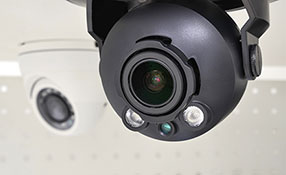We will examine the question of the increasing technicality of the closed circuit video industry from three perspectives; The Manufacturer, the Specifier, and the Integrator.
History Of Closed Circuit Video Industry
Before we begin examining this subject, let's take a look briefly at the history of the Closed Circuit Video Industry.
- 1920s: Tubes were invented (Cathode, Image Dissector, Iconoscope)
- 1940s: CCTV first introduced to monitor rocket launches
- 1970s: The “Chip” - Charged Coupling Devices
- 1980s: Multiplexers and Switchers
- 1999-2000: DVRs
- Late 1990s: Internet Protocol (IP) Technology
- 2003: Power over Ethernet (PoE)
- 2000s: HD, Megapixel, Multi-megapixel
As you can see, the industry is relatively young (less than 100 years), with the majority of innovations occurring in the last fifty years.
The Manufacturer
Looking at the timeline above it is clear that innovation is accelerating year over year which in turn drives more solutions for the security professional. Advances that used to be measured over decades are now happening annually. This rapid pace has proven difficult for the specifier and integrator community to stay abreast of new technology which slows adoption of a solution. A clear example of this was the introduction of Network Cameras which are widely accepted today but took close to a decade to reach that level. Integrators discovered that they needed a new skillset, computer networking, to be successful. In turn, manufacturers began focusing on developing products that were easier to install. In many ways this dynamic is playing out in the video analytics market today with many vendors realising that their initial solutions were to complex and could not meet original expectations.
With regards to video surveillance |
With regards to video surveillance the shift to digital has been largely due to forensic uses cases where advances in resolution have outpaced analog solutions. Analog still has its place but its market share decreases each year as the price of networked cameras drops and customers’ expectations increase. Those expectations include moving video from a reactive tool to a proactive one that mitigates risk on the fly so that security professionals can respond to an incident as it unfolds.
Adding intelligence at the edge using something as simple as Video Motion Detection (VMD) or other more advanced analytics such as cross-line detection, tamper alarms, or even audio triggers could enable security professionals the ability of a more timely response. Most network cameras come with embedded a microphone so adding a simple analytic that monitors and alerts on aggressive voices or yelling could be the difference in a recording of a fight vs preventing one. There are many more examples but are these technologies actually being used? Are manufacturers adding features just because they can or are there real needs that drive the development of the solutions?
Manufacturers should spend more time listening to end-users, integrators and specifiers so that they develop products that fill gaps and deliver solutions that close those gaps. They must be mindful of the capabilities of their channel partners and if necessary provide the education to properly deliver solutions. Manufacturers need to innovate, educate and support solutions that address security industry needs. If they don’t then they won’t be around for long.
 |
| It is critical for the designer/specifier to remember the mission and purpose for the systems to be deployed |
The Specifier
First and foremost, it is critical for the designer/specifier to remember the mission and purpose for the systems to be deployed. Critical elements of this process include ensuring that the design matches the operational definition of success, designs should incorporate and include critical usages (day to day, investigations, emergencies), and incorporate provisions for timely and effective response. So how is this to be done efficiently and effectively? Here is a brief list of considerations the specifier needs to have addressed and answered:
- A great design in the wrong application yields low return
- Field & Angle of view are Critical
- Lighting has to be sufficient, appropriate, and positioned
- Fast motion requires fast image rate
- Operators must have proper context to correctly interpret video
- Video can’t do it all – Effective integration may be required
- Big video requires big infrastructure
Feature vs. Value
Basically, it comes down to Features vs. Value:
- Does the video system show what is needed and required?
- How uniform is the light?
- Are there enough pixels on target?
- Is the system compatible for the needs?
- Angles? Coverage? Direction? How Displayed? Compatible with camera data feeds?
The Integrator
Integrators face many challenges in the closed circuit video industry, as we read in the manufacturer's section, the terminology is constantly evolving, with new terms added almost daily. They are faced with having to keep up with the "latest and greatest" technologies the manufacturers produce (and market to the end users). The systems can become a blend of various and sometimes complicated technologies, so it is imperative that integrators stay abreast of these evolutions. Since the integrator is the last contact point with the end user, it is important that they understand as well the customers' expectations, the specifiers expectations, and the manufacturer's intent of product use. In other words: are we providing the most efficient and effective solution?
Systems designed and deployed |
Many of the systems designed and deployed today are very complex in nature, consisting of large numbers of cameras, as well as unique transmission, recording, and storage methods. It is crucial for the integrator to not only be aware of these items but most importantly know simply "what was told and sold" to the end user. The integrator needs to have knowledge of the end users expectations of the video system being deployed in order to adequately deploy the proper technology. In other words: does the technology meet the client's needs or is it too complicated to achieve the goals? Sometimes (actually more often than not) simpler is better.
Ongoing Training To Resolve Issues
How can we remedy the potential issues? One word - EDUCATION!
But who do we educate? Most manufacturers have regular training programs that are geared to the technician, but what about training for the sales team, the specifiers, and the end users? Education needs to be a collaborative effort including all who touch these highly evolved systems. Each device designed into a system needs to have a clear defined purpose and function. The software should be easy to operate and function cleanly- remember who is operating these systems - typically a guard or administrative person- not someone who is necessarily technically skilled in our industry!
Ongoing training and communication are the key elements to a successful system deployment and use. When in a training or continuing education class on these systems ask questions, if something is not clear to you, investigate it until you feel that you clearly understand.
In closing, we believe that technology in the video industry has made some amazing and significant strides in providing clear, storable and retrievable images, however it is up to all of us to try and keep the operations as simple as possible. Remember - if the end user cannot operate the system effectively, we have all failed.
























